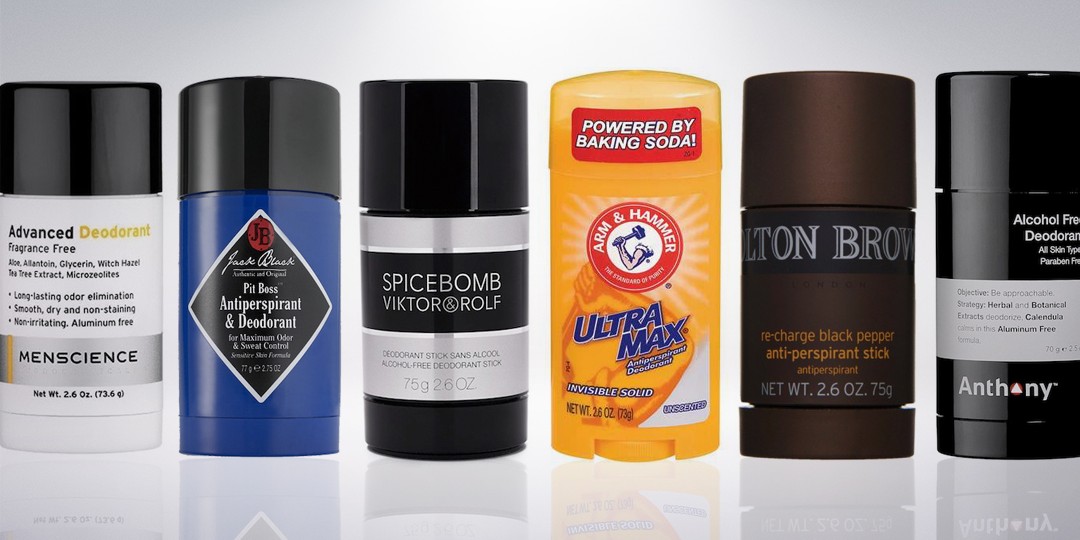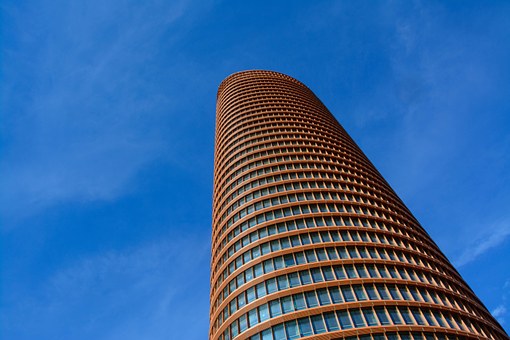This paper investigates the physiological production of sweat, and how humans have developed strategies involving deodorants and antiperspirants to prevent the bacteria in our body from producing foul-odor chemicals. Well-known mechanisms of sweat production, from eccrine and apocrine glands, are described to introduce the topic. Biochemical explanations of the four main production pathways axillary bacteria undergo to transform odorless sweat into pungent aromatic compounds are described. This paper also looks into how humans first started battling these stinky bacteria, and the chemical and physical design development deodorants and antiperspirants have gone through. Furthermore, an insight as to where the future of deodorants and antiperspirants lie is also provided with some prospective researches and novel ideas.
Introduction
Although hard to imagine, for most of human history, people did very little to try and mask the funky odors we naturally produce. There was simply not enough knowledge as to what exactly made us smell bad, and why we sweat so much in certain places. It was not until the late 1800’s, when enough microbial research had been done on the human body that the first cosmetic deodorant and antiperspirant were released. Biologists, genetic engineers, and chemical engineers had to partner to develop safe pharmaceutical products to finally hide this smell that is considered embarrassing by many today. But to understand how we have been able to engineer ways to mask malodor, we must first understand where the smell comes from in the first place.
WHY DO WE SWEAT?
Imagine yourself preparing for a big presentation and you find that your palms get sweaty. Now, imagine yourself running on a track on a sunny day, and find sweat dripping down your body. In both of these situations, the production of sweat is likely to occur, but why? The answer lies in our sweat-producing glands.
There are two main types of sweat-producing glands in our bodies, eccrine and apocrine. Eccrine glands are very abundant and found all throughout the body, with 600-700 glands per squared centimeter in palms and soles and up to 25,000 glands present in just one armpit [9]. These glands are used during thermoregulation, the process your body goes through to cool off and achieve homeostasis, the stable internal condition our body keeps. If body conditions deviate from homeostasis, the body must respond in an appropriate manner to return the body to its balanced state. The sweat produced by these glands provide for evaporative cooling in order to maintain the physiological temperature of 37 degrees Celsius when body temperature rises, such as in the running example. However, these glands can also respond to emotional cues and secrete sweat, such as in the presentation example. Luckily, eccrine gland sweat consists of a dilute electrolyte solution, containing sodium chloride, potassium, ammonia, bicarbonate, lactate and urea, meaning they are less likely to smell [2].
Apocrine glands, on the other hand, are the glands that produce the sweat that does becomes smelly. Unlike eccrine glands, apocrine glands are only found in the armpits, mammary areola, anogenital area, scalp, and abdomen. Because of their small number compared to eccrine glands, they do not play a big part in thermoregulation [2]. However, the sweat produced by apocrine glands differ chemically to eccrine gland sweat, as they contain proteins, cholesterol, steroid derivatives, squalene, and lipids. Gas chromatography showing the diverse chemical makeup of male axillary sweat [11] secreted by sebaceous glands [1]. This difference is the reason our armpits induce more odor than other parts of our skin that do not have apocrine glands. However, it has been seen that pure apocrine sweat is actually odorless, indicating that there is something that can react with chemical in sweat to produce its malodor.
There are two main types of sweat-producing glands in our bodies, eccrine and apocrine. Eccrine glands are very abundant and found all throughout the body, with 600-700 glands per squared centimeter in palms and soles and up to 25,000 glands present in just one armpit [9]. These glands are used during thermoregulation, the process your body goes through to cool off and achieve homeostasis, the stable internal condition our body keeps. If body conditions deviate from homeostasis, the body must respond in an appropriate manner to return the body to its balanced state. The sweat produced by these glands provide for evaporative cooling in order to maintain the physiological temperature of 37 degrees Celsius when body temperature rises, such as in the running example. However, these glands can also respond to emotional cues and secrete sweat, such as in the presentation example. Luckily, eccrine gland sweat consists of a dilute electrolyte solution, containing sodium chloride, potassium, ammonia, bicarbonate, lactate and urea, meaning they are less likely to smell [2].
Apocrine glands, on the other hand, are the glands that produce the sweat that does becomes smelly. Unlike eccrine glands, apocrine glands are only found in the armpits, mammary areola, anogenital area, scalp, and abdomen. Because of their small number compared to eccrine glands, they do not play a big part in thermoregulation [2]. However, the sweat produced by apocrine glands differ chemically to eccrine gland sweat, as they contain proteins, cholesterol, steroid derivatives, squalene, and lipids. Gas chromatography showing the diverse chemical makeup of male axillary sweat [11] secreted by sebaceous glands [1]. This difference is the reason our armpits induce more odor than other parts of our skin that do not have apocrine glands. However, it has been seen that pure apocrine sweat is actually odorless, indicating that there is something that can react with chemical in sweat to produce its malodor.
THE BACTERIA THAT LIVE UNDER OUR ARMS
Although apocrine sweat is a mixture of odorless compounds, the harmless bacteria in our armpit are able to utilize them for their own metabolic processes and thereby produce stinky compounds. Although different microbial prevalences occur in different individuals, important bacteria in our armpit include Propionibacterium, Micrococcus, Staphylococcus, and the odor-producing bacteria Corynebacterium [3]. The biochemical pathways of how exactly Corynebacterium is able to produce aromatic compounds from odorless are not yet fully elucidated, but scientific research has unveiled many key pathways related to the origin of the smell. These advances allow researchers and engineers to formulate strategies on how to prevent the smell. Currently, there are four potential pathways that bacteria undergo to produce odor from apocrine sweat [1].
The first pathway involves the biotransformation of steroids dissolved in the apocrine sweat. Via unknown pathways, Corynebacteria are able to convert steroid derivatives into 5α androst-16-en-3-one, the main malodor chemical derived from steroids. The second and third pathways involve bacterial enzymes that are able to cleave certain odor-masking amino acids from their stinky counterparts.
The first of these pathways involves Nα acylglutamine aminocyclase, an enzyme that is able to cleave the amino acid glutamine from (E)-3-methyl-2-hexenoic acid (3M2H). This release of glutamine unveils the stench that 3M2H holds and therefore makes our sweat stink. The second enzymatic pathway involves sulfur compounds bound to odor-masking amino acids. Sulfur has been observed to be a characteristic smell in cat urine, but also in passion fruit juice, so paying particular attention to its effect on sweat malodor is extremely important [4,10]. The same way that glutamine is cleaved off of 3M2H, sulfur-containing compounds such as 3-methyl-sulphanylpentan-1-ol (3M3SH) bound to the amino acids glycine and cysteine can also be cleaved off [7]. When bound, this glycine-cysteine conjugate makes 3M3SH odorless, but the bacterial enzyme TpdA can leave off glycine, and the enzyme AeCD can cleave off cysteine, leaving 3M3SH with no odormasking amino acids, leading to a foul smell. Lastly, the fourth pathway involved in odorformation is the biotransformation of long-chain Fatty Acids (LCFAs). Together with apocrine and eccrine glands, the armpit contains sebaceous glands, which regularly secretes lipids on our skin. However, some bacteria have evolved to use these lipids for their own metabolic purposes. Schematic of amino-acid cleaving enzymes in apocrine sweat malodor [1]. an odor due to their metabolic by-products. Propionibacteria and Corynebacteria secrete the enzyme lipase, responsible for the first break down of skin lipids into LCFAs. Following this initial digestion, aerobic lipophilic Corynebacteria possesses an array of unknown metabolic enzymes able to convert these LCFAs to bacterial energy and odor producing compounds. Although this relationship seems parasitic, bacteria have also been shown to use such lipids from sebaceous glands for moisturizing dry skin patches. Through these microbiological and biochemical discoveries, chemists and engineers stand at a better position to deal with the control of perspiration and its smell than ever before.
The first pathway involves the biotransformation of steroids dissolved in the apocrine sweat. Via unknown pathways, Corynebacteria are able to convert steroid derivatives into 5α androst-16-en-3-one, the main malodor chemical derived from steroids. The second and third pathways involve bacterial enzymes that are able to cleave certain odor-masking amino acids from their stinky counterparts.
The first of these pathways involves Nα acylglutamine aminocyclase, an enzyme that is able to cleave the amino acid glutamine from (E)-3-methyl-2-hexenoic acid (3M2H). This release of glutamine unveils the stench that 3M2H holds and therefore makes our sweat stink. The second enzymatic pathway involves sulfur compounds bound to odor-masking amino acids. Sulfur has been observed to be a characteristic smell in cat urine, but also in passion fruit juice, so paying particular attention to its effect on sweat malodor is extremely important [4,10]. The same way that glutamine is cleaved off of 3M2H, sulfur-containing compounds such as 3-methyl-sulphanylpentan-1-ol (3M3SH) bound to the amino acids glycine and cysteine can also be cleaved off [7]. When bound, this glycine-cysteine conjugate makes 3M3SH odorless, but the bacterial enzyme TpdA can leave off glycine, and the enzyme AeCD can cleave off cysteine, leaving 3M3SH with no odormasking amino acids, leading to a foul smell. Lastly, the fourth pathway involved in odorformation is the biotransformation of long-chain Fatty Acids (LCFAs). Together with apocrine and eccrine glands, the armpit contains sebaceous glands, which regularly secretes lipids on our skin. However, some bacteria have evolved to use these lipids for their own metabolic purposes. Schematic of amino-acid cleaving enzymes in apocrine sweat malodor [1]. an odor due to their metabolic by-products. Propionibacteria and Corynebacteria secrete the enzyme lipase, responsible for the first break down of skin lipids into LCFAs. Following this initial digestion, aerobic lipophilic Corynebacteria possesses an array of unknown metabolic enzymes able to convert these LCFAs to bacterial energy and odor producing compounds. Although this relationship seems parasitic, bacteria have also been shown to use such lipids from sebaceous glands for moisturizing dry skin patches. Through these microbiological and biochemical discoveries, chemists and engineers stand at a better position to deal with the control of perspiration and its smell than ever before.
A BRIEF HISTORY OF DEODORANTS AND ANTIPERSPIRANTS
First, it is important to discern between deodorants and antiperspirants. Deodorants kill odor producing bacteria while antiperspirants physically block eccrine sweat pores. The first deodorant was produced in 1888, with the trademark name “Mum.” Its active ingredient was zinc oxide, a bactericide commonly found in deodorants today still. However, bioengineers have been able to find many other ways to control axillary bacterial growth, including the safe use of antibodies or even citronella oil [6]. This wide range of possible ingredients for deodorants is greatly contrasted by antiperspirant’s chemical constraints.
In 1903, the first antiperspirant came into the market under the name “Everdry,” with its active ingredient being aluminum chloride. Unlike the deodorant industry, many present-day antiperspirants still rely on aluminum salts, with popular ingredients including aluminum formate, aluminum chlorohydroxide, and aluminum zirconium tetrachlorohydrate gly [6]. These metal salts work by mechanical obstruction of sweat glands due to a precipitate complex they form with mucopolysaccharide [8]. Early versions of both deodorants and antiperspirants proved to be extremely inefficient and inconvenient to use. Deodorants used to be creams, which tended to leave skin and clothes greasy. However, inspired by the ball-point pen, the roll-on deodorant was invented in the 1940s to assist with ease of use. In the further decades, aerosols, gels, and sticks were engineered to further accommodate individual customers’ needs and preferences. On the other hand, antiperspirants faced an early challenge in their method of preparation. In the early 20th century, antiperspirants had to be dissolved in alcohol or acid for three weeks, and only then could they be swabbed onto the skin. This was a highly inefficient process as it was slow to dry, could irritate the skin, and ruin clothes. Only in the 1970’s was this issue resolved with the discovery of cyclomethicones
Cyclomethicones have a stable composition due to their silicon-oxygen bonds. They do not irritate the skin, have low viscosity, meaning they will not feel like syrup on your skin, and have a high volatility, meaning they
will evaporate quickly. This makes cyclomethicones excellent solvents for cosmetic products in which complete evaporation of solvent is desired. Instead of the regular three week wait, aluminum metals could now dissolve in their solvent in under an hour, and quickly evaporate after application onto the skin. The evaporation would take inactive ingredients while leaving the active ingredients (such as aluminum salts) in the skin for antiperspirant action. Currently, the only issue cyclomethicones face is their potential bioaccumulation in our
environment.
In 1903, the first antiperspirant came into the market under the name “Everdry,” with its active ingredient being aluminum chloride. Unlike the deodorant industry, many present-day antiperspirants still rely on aluminum salts, with popular ingredients including aluminum formate, aluminum chlorohydroxide, and aluminum zirconium tetrachlorohydrate gly [6]. These metal salts work by mechanical obstruction of sweat glands due to a precipitate complex they form with mucopolysaccharide [8]. Early versions of both deodorants and antiperspirants proved to be extremely inefficient and inconvenient to use. Deodorants used to be creams, which tended to leave skin and clothes greasy. However, inspired by the ball-point pen, the roll-on deodorant was invented in the 1940s to assist with ease of use. In the further decades, aerosols, gels, and sticks were engineered to further accommodate individual customers’ needs and preferences. On the other hand, antiperspirants faced an early challenge in their method of preparation. In the early 20th century, antiperspirants had to be dissolved in alcohol or acid for three weeks, and only then could they be swabbed onto the skin. This was a highly inefficient process as it was slow to dry, could irritate the skin, and ruin clothes. Only in the 1970’s was this issue resolved with the discovery of cyclomethicones
Cyclomethicones have a stable composition due to their silicon-oxygen bonds. They do not irritate the skin, have low viscosity, meaning they will not feel like syrup on your skin, and have a high volatility, meaning they
will evaporate quickly. This makes cyclomethicones excellent solvents for cosmetic products in which complete evaporation of solvent is desired. Instead of the regular three week wait, aluminum metals could now dissolve in their solvent in under an hour, and quickly evaporate after application onto the skin. The evaporation would take inactive ingredients while leaving the active ingredients (such as aluminum salts) in the skin for antiperspirant action. Currently, the only issue cyclomethicones face is their potential bioaccumulation in our
environment.
ENGINEERING FOR THE FUTURE CONTROL OF THE HUMAN MICROBIOME
The convergence in biological research and chemical engineering is incredibly important in the future of safe and effective cosmetic products such as deodorants and antiperspirants. With a 90% US consumer rate and an industry that generates 1 billion dollars a year, engineering the best product possible is imperative to attend to the population’s needs. Classified as cosmetics by the FDA, deodorants and antiperspirants must go through rigorous testing in order to be commercially available to the public [3].
Many genetic engineers are currently working on genome sequencing bacteria that live in our skin in order to identify genes that produce odor-forming enzymes, such as Nα acylglutamine aminocyclase. By creating a map of these biochemical pathways that induce malodor, chemists can discover agents that can inhibit the action of odorforming enzymes and integrate them to deodorants and antiperspirants. On the other hand, material scientists are working on ways to encapsulate the active ingredients in a polymer capsule to better time the delivery of the active ingredient to the skin. Lastly, and perhaps a more creative way to try and solve the problem of malodor, is with molecular engineering, which is essentially trying to fool our noses. Synthesis of analogous compounds to the real and stinky ones (such as 3M2H and 3M3SH), could potentially prevent us from smelling the bad compounds. This means that researchers are trying to find chemicals that look like 3M2H and 3M3SH but that will have a slight atomic difference. The goal is to make this atomic difference small enough so that our olfactory receptors will bind to them as if they are the original compounds, but to make the difference big enough so that the odor is actually pleasant. When the analog is bound to the olfactory receptor, the original 3M2H or 3M3SH will not be able to bind, allowing us to perceive the foul smell as less intense and more pleasant [5].
Many genetic engineers are currently working on genome sequencing bacteria that live in our skin in order to identify genes that produce odor-forming enzymes, such as Nα acylglutamine aminocyclase. By creating a map of these biochemical pathways that induce malodor, chemists can discover agents that can inhibit the action of odorforming enzymes and integrate them to deodorants and antiperspirants. On the other hand, material scientists are working on ways to encapsulate the active ingredients in a polymer capsule to better time the delivery of the active ingredient to the skin. Lastly, and perhaps a more creative way to try and solve the problem of malodor, is with molecular engineering, which is essentially trying to fool our noses. Synthesis of analogous compounds to the real and stinky ones (such as 3M2H and 3M3SH), could potentially prevent us from smelling the bad compounds. This means that researchers are trying to find chemicals that look like 3M2H and 3M3SH but that will have a slight atomic difference. The goal is to make this atomic difference small enough so that our olfactory receptors will bind to them as if they are the original compounds, but to make the difference big enough so that the odor is actually pleasant. When the analog is bound to the olfactory receptor, the original 3M2H or 3M3SH will not be able to bind, allowing us to perceive the foul smell as less intense and more pleasant [5].
Conclusion
Although sweating may be someone’s biggest embarrassment, it is also an unavoidable physiological process that helps us cool off our body to maintain homeostasis. With new research methods, chemical isolation techniques, and engineering new ideas and methods for formulation and application of deodorants and antiperspirants, we can find a safe and efficient way of preventing malodor formation. Understanding our symbiotic relationship with these smelly bacteria, truly could make a difference the next time you go in a crowded bus during rush hour.
References
-
- [1] H. Barzantny, I. Brune, and A. Tauch. Molecular Basis of Human Body Odour Formation: Insights Deduced from Corynebacterial Genome Sequences. International Journal of Cosmetic Science, Volume 34, Issue 1, July 2011, Pages 2–11. (2012) Available: http://dx.doi.org/10.1111/j.1468-2494.2011.00669.x
- [2] A. Benohanian. Antiperspirants and Deodorants. Clinics in Dermatology, Volume19, Issue 4, July 2001, Pages 398–405. http://dx.doi.org/10.1016/S0738-081X(01)00192-4
- [3] C. Callewaert, et al. Deodorants and Antiperspirants Affect the Axillary Bacterial
- Community. Archives of Dermatological Research, Volume 306, Issue 8 (2014),Pages 701–710. http://dx.doi.org/10.1007/s00403-014-1487-1
- [4] K. Engel, R. Tressl, Identification of New Sulfur-Containing Volatiles in yellow Passionfruits (Passiflora edulis f. flavicarpa). Journal of Agriculture Food Chemistry. Volume 39, Issue 12, (2012, December), Pages 2249–2252 (1991).http://dx.doi.org/10.1021/jf00012a030
- [5] A. Esser-Kahn, S. Odom, N. Sottos, S. White, J.Moore. Triggered Release from Polymer Capsules. Macromolecules, Volume 44, Issue 14, (2011, July), Pages 5539-5553. http://dx.doi.org/10.1021/ma201014n
- [6] S. Everts. Deodorants & Antiperspirants. Chemical & Engineering News Archive, Volume 90, Issue 27 (2012). http://dx.doi.org/10.1021/cen-09027-scitech2
- [7] Y. Hasegawa,, M. Yabuki, M. Matsukane, “dentification of New Odoriferous Compounds in Human Axillary Sweat. Chemistry and Bio-Diversity, Volume 1, Issue 12 2042–2050 (2004, December). http://dx.doi.org/10.1002/cbdv. 200490157
- [8] E. Holzle, A. Kligman. Mechanism of anti-perspirant action of aluminum salts. Journal of Cosmetic Science, Volume 30 (1979, October), Pages 279-295.
- [9] K. Sato. Biology of sweat glands and their disorders I Normal sweat gland function. Journal of the American Academy of Dermatology, Volume 20, Issue 4, (1989, April), Pages 537– 63.http://dx.doi.org/10.1016/S0190-9622(89)70063-3
- [10] R. Westall. The amino acids and other ampholytes of urine. The Biochemical Journal,Volume 52, Issue 4, (1952) Pages 638– 642 (1952). ISSN:0264-6021
- [11] C. Wysocki, G. Preti. Facts, Fallacies, Fears, and Frustrations with Human Pheromones. The Anatomical Record, Volume 281A, Issue 1, (2004, November), Pages 1201–1211. http://dx.doi.org/10.1002/ar.a.20125




